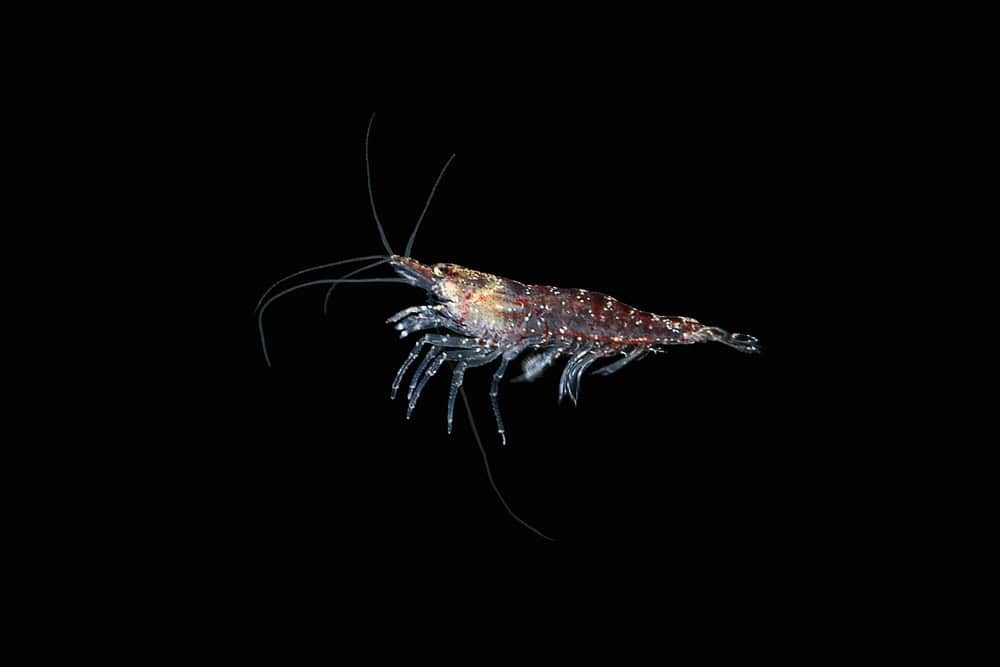From market growth and emerging trends to supply chain disruptions and regulatory updates, our panelists – Ellen Schutt (GOED), Ståle Søfting (GC Rieber VivoMega), Liki von Oppen-Bezalel (TriNutra), Tanja Kokkinis (Pharmako Biotechnologies), Merce Piñol (Aker BioMarine) and Frank Möllering (Nutriswiss AG)- offer their perspectives on the key factors shaping the omega-3 landscape in 2025 and beyond.
Scientific research continues to affirm the benefits of omega-3s in heart, brain, eye, and maternal health, though experts emphasize the need for more large-scale and primary prevention studies. On the regulatory front, Europe’s evolving stance on mineral oil aromatic hydrocarbons (MOAH) and the potential impact of U.S. trade policies are key considerations for industry stakeholders.
As sustainability, innovation, and scientific validation drive the industry forward, our expert panel explores the challenges and opportunities that lie ahead for omega-3 producers, suppliers, and consumers worldwide.
GOED: Ellen Schutt, Managing Director
“Overall, the EPA and DHA omega-3 supplement market has been strong globally, with growth of 9% in 2023, to reach US$5.6 billion. Mature markets like Europe and the US (as well as Japan and Australia) increased slightly, while China and Southeast Asia and emerging markets in the Rest of the World and Latin America posted higher growth figures.
“n terms of sources, while anchovy oil continues to be the largest source of EPA and DHA oil for the supplement industry, a disruption in the fishing seasons in Peru in 2023 led to a shortage in supply, and concerns about the long-term supply situation. This led to increased interest in alternative supply sources, which continues today. One of the beneficiaries of this situation has been microalgal oils; however, this is still a very small part of the market, and market growth is hindered by the limited availability of both EPA and DHA in algal form. On the topic of delivery forms, the category is expanding beyond traditional soft gel products, with heightened interest in forms like gummies and chews.
The science supporting the benefits of EPA and DHA is strong, with 50,000 published papers and 5000 human clinicals. The strongest science is in heart health, brain health, eye health and prenatal/maternal health outcomes. The challenge has been the recent lack of large-scale studies and an ongoing need for more primary prevention studies.
From a regulatory perspective, the primary conversation in Europe recently has been an impending European regulation on mineral oil aromatic hydrocarbons (MOAH), a lubricant sometimes used in the manufacture of soft gels, and a potential carcinogen. The EU initially proposed a maximum limit of 2 mg/kg but last year announced a new draft proposal that raises the limit to 10 mg/kg, set to go into effect in 2027. The new limit still requires a vote by European Member States and the European Parliament, which is expected to happen sometime this year.
The biggest issue right now in the category broadly is the threat of tariffs as a result of US President Trump’s actions. This has caused uncertainty in markets around the globe and the effects of these activities remain to be seen at this point.”
GC Rieber VivoMega: Ståle Søfting, Sales and Marketing Director
“General consumer interest in omega-3 ingredients remains strong into 2025 despite the turmoil and challenges in fish oil supply and cost over the past couple of years. We expect to see continued changes at the consumer level as well as the production side of omega-3 as new raw materials, such as algae, are developing their position as an alternative source rich in omega-3.
GC Rieber VivoMega will continue expanding our portfolio of EPA and DHA-rich algae ingredients for supplement formulation to complement our strong position in fish oil concentrates, all delivered under the VivoMega quality platform that our customers are used to.”
TriNutra: Liki von Oppen-Bezalel, Business Development Director
“Omega-3s are among the most popular and clinically backed dietary supplements, and the category is expected to continue to gain traction due to innovations such as omega-3 alternatives and synergistic ingredient combinations. These ingredient synergies offer great potential for supporting wellness and lifestyle goals. They can improve efficacy by mutually enhancing the effects of the ingredients and giving consumers more flexibility to customize and incorporate the nutritional products they want to consume.
At TriNutra, we’ve invested in clinical testing to understand how our premium, USP-grade black seed oil, ThymoQuin, interacts with omega-3s DHA & EPA to enhance their benefits. Our research found that ThymoQuin nearly tripled omega-3s anti-inflammatory activities. Moreover, another published study showed that combining ThymoQuin and Omega-3s favorably affected whole-body energy metabolism. Notably, it significantly balanced blood glucose, insulin sensitivity, and lipid metabolism and lowered cortisol levels significantly more than omega-3 alone, offering comprehensive, synergistic health benefits.”
Pharmako Biotechnologies: Tanja Kokkinis, Communications and Brand Manager
“In 2023 the global omega-3 market size was valued at USD 2.62 billion with an expected compound annual growth rate (CAGR) of 7.9% from 2024 to 2030.
The demand for Omega-3 fatty acids globally is projected to grow significantly over the next few years owing to rising consumer awareness regarding the multiple health benefits of the active ingredient, including lowering blood pressure, managing cholesterol and reducing risks related to heart diseases. As more research is conducted using Omega-3 focusing on newer health categories, such as cancer, support for brain health and the more established health benefits such as inflammation and arthritis, the demand for the supplement is naturally on the rise.
The growing consumer preference for a healthy and nutritious diet is further expected to fuel product demand shortly. Numerous scientific publications have demonstrated the benefits of Omega-3 supplementation and raised awareness for the product’s health benefits among ordinary consumers and not just from within the scientific community. As a result, there is a substantial change in the diet of consumers and everyday foods items are being fortified with Omega 3 leading to an acceleration in demand for the material globally. Asia is one of the fasted expanding markets within this product category.
Rising pressure on anchovy fisheries to harvest fish oil has increased the demand from non-fish sources, including Evening Primrose Oil, Flax Seed Oil, Walnuts, Algae, and Krill oil. The market is witnessing continuous diversification in its product offerings as consumers are looking for alternatives to traditional fish oils.
The escalating demand for fish oil, which is mainly obtained from anchovy, mackerel, salmon, or herring has led to concerns about overfishing, prompting the industry to seek sustainable alternatives or increase the effectiveness of the products currently on the market. Market players are focusing on R&D to enhance product performance and are creating innovative Self Assembly Drug Delivery Lipid Nanoparticles technology for use in next generation Omega 3 products, which in turn is projected to create lucrative opportunities for the market in the near future.”

Aker BioMarine: Merce Piñol, SVP HHI EMEA&LATAM
The omega-3 market is set to continue its upward trajectory in 2025, driven by increasing consumer awareness of the essential role omega-3s play in overall health—particularly in supporting heart, brain, and joint health. As demand for high-quality, sustainable omega-3 sources rises, Superba Krill stands out with its unique composition. Unlike traditional fish oils, its omega-3s are in phospholipid form, ensuring superior bioavailability and enhanced absorption, making it a more effective choice for consumers.
Beyond heart health, Superba Krill supports joint function, helps reduce inflammation, and promotes cognitive well-being. Backed by strong scientific research and sourced sustainably, it is well-positioned to meet the growing consumer demand for premium, eco-friendly omega-3 supplements.
Krill oil is an efficient option for women’s health. It is effective in managing dysmenorrhea and emotional PMS symptoms, and for mature women, it may support hormonal balance and reduce inflammation, helping to ease menopausal symptoms. Beyond hormonal health, krill oil’s natural nutrient complex provides essential support for a radiant, healthy glow, contributing to skin health benefits.
Nutriswiss AG: Frank Möllering, Head of Research & Development
Omega-3 fatty acids are essential for a healthy diet. Today, thanks to modern processes, they can be obtained in the highest quality and taken in the form of food supplements in a convenient and tasteless way. Unfortunately, unsaturated fatty acids oxidise very quickly. This leads to the formation of undesirable oxidation products, which can severely impair the sensory parameters. Due to their fat-soluble properties, lipids are also very susceptible to environmental pollutants, which can get into the crude oils despite careful sourcing, even with organic products. Regardless of whether fish, algae or vegetable oils are the source of unsaturated essential fatty acids: All omega-3 oils require individual, careful treatment and processing in order to preserve their essential fatty acids, micronutrients and vitamins.
The mild distillation technology Nutriswiss uses is a gentle, thermal separation process which has already been established in the fish oil sector. Further developed and implemented as one of several purification steps, the plant concept allows contaminants to be removed without generating new ones. It prevents the formation of process contaminants such as 3-MCPD or glycidyl fatty acid esters and, at the same time, removes ortho-phthalates plasticisers and many pesticides. Other pollutants, including MOSH/MOAH, can also be significantly reduced. The gentle process protects micronutrients and can be used to maximise the yield of omega-3 fatty acids.
We see microalgae as the most sustainable and important alternative raw material. Due to the challenging breeding under almost clinical conditions, they are not the most cost-effective choice, but the food industry increasingly sees them as the more sustainable source of omega-3. They comprise around 50% fat, but the extraction and subsequent refining process is demanding. Almost as importantly, they can have considerably higher DHA contents than tuna oil and – depending on their origin – also EPA. In addition, algae cultures are more environmentally friendly and protect fish stocks. Nutriswiss has gathered many years of experience in refining DHA-rich algae oil as toll refiner and our annual production volume has meanwhile outstripped the refining of DHA-rich tuna oil by far. We partner with customers from development through to routine production of DHA-rich algae oils from 1 kg scale up to several 100 tonnes per year.




